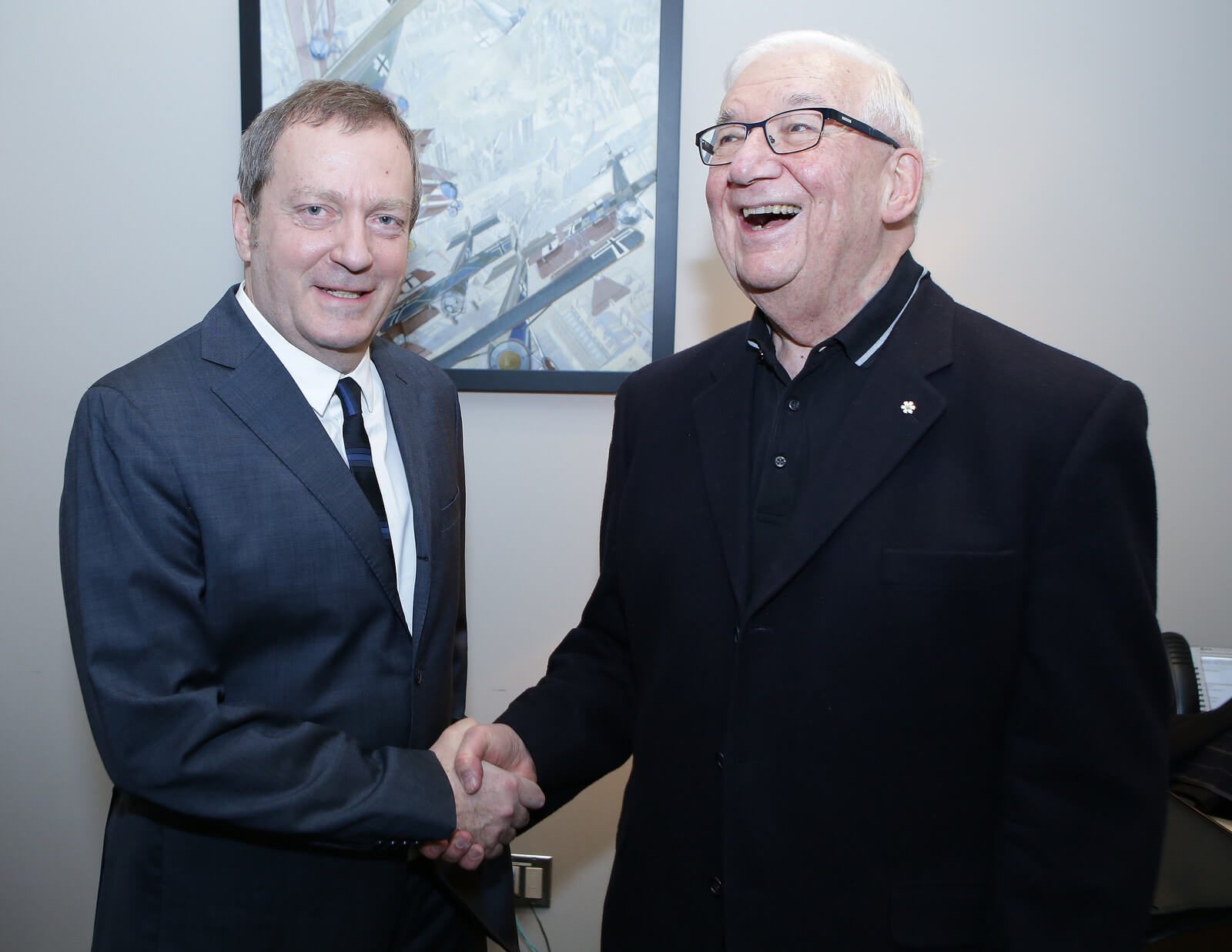 Canada faces the prospect of modernizing and broadening North American defence, writes James Fergusson. As such, it will be forced to spend more on defence or risk ceding our national defence to the US.
Canada faces the prospect of modernizing and broadening North American defence, writes James Fergusson. As such, it will be forced to spend more on defence or risk ceding our national defence to the US.
By James Fergusson, March 29, 2017
Most Canadians have serious misgivings about President Donald Trump and the Trump administration. One should also remember that Liberal prime ministers and Republican presidents tend to have difficulties getting along, as Justin’s father experienced with Nixon and Reagan. Still, the initial meeting of President Trump and Prime Minister Trudeau in Washington appears to have been a success. Indeed, Trudeau has been applauded for his deft managing of the relationship; their joint statement largely reflects the status quo on many issues. Unique, however, to this statement is the direct reference to the North American Aerospace Defence Command (NORAD) and the modernizing and broadening of North American defence.
This reference, as well as the overall tone of the statement and Trump’s support of the Super Hornet purchases, seems to have put to rest Canada’s greatest fear on the defence file: that Canada would be particularly targeted for failing to spend enough on defence given the special NORAD agreement. To wit, the recent federal budget suggests the Trudeau government has discounted, at least initially, the Trump spending threat.
Of course, for all allies, Trump’s proclamations on the general lack of defence spending may well remain the common refrain of previous administrations’ proclamations, including Obama’s, on the need for key allies – especially NATO members – to spend more. Regardless, the Canadian government cannot take solace in either the past repeating itself without repercussions, or that Canada will continue to be exempt from spending more on defence.
It is difficult to know what the two leaders meant exactly by their reference to the need to modernize and broaden NORAD and North American defence. Did both raise the issue or just one of them? Do the two share a common interpretation as well as agree on the implications, including investments? Modernizing is likely to refer simply to the pressing requirement to replace the North Warning System (NWS), and perhaps the need to replace Canada’s CF-18 fighters. Broadening, however, implies much more. It suggests that North American defence cooperation is about to take a step forward, and with it, the possible expansion of the NORAD mission suites.
In the immediate wake of 9/11, then Secretary of Defense Rumsfeld proposed the transformation of NORAD from a single-dimension aerospace command to a multi-dimensional defence command.
It is important to recall that in the immediate wake of 9/11, then Secretary of Defense Rumsfeld proposed the transformation of NORAD from a single-dimension aerospace command to a multi-dimensional defence command. Rejected by Canada, the US subsequently stood up Northern Command (NORTHCOM), creating the Canada-US tri-command relationship – in which NORAD serves as the binational aerospace component alongside other aspects of defence operating under bilateral arrangements between the militaries of both countries. Both Canada and the US also agreed to establish the Joint Planning Group within NORAD to examine future areas of greater defence cooperation and integration. In 2006, with the indefinite renewal of NORAD, Canada and the US assigned to NORAD the maritime warning mission, with the significant caveat that NORAD would not duplicate existing national efforts, as laid out in the 2011 Tri-Command Terms of Reference. Thus, NORAD evolved into a two environment command (air warning and control, maritime warning), even though it had no responsibility for maritime control.
In 2013, US General Charles Jacoby, commander of NORAD and NORTHCOM, commissioned the omnibus NORAD Next study to examine future North American defence requirements and future roles for NORAD. Partially due to the large resource (personnel) demands of NORAD Next, it was scaled back in 2015-16 and replaced by the Evolution of North American Defence (EVONAD), which was assigned to NORAD by the Permanent Joint Board on Defence with the caveat of establishing temporal priorities and breaking up the range of issues into manageable chunks. The first EVONAD report to the Permanent Joint Board is scheduled for this year.
The future of North American defence cooperation is tied up with internal US military command structures.
This history suggests that the long-term vision of a binational North American Defense Command has not gone away, at least from a NORAD-NORTHCOM perspective. This is also tied to issues within the US Unified Command Plan, and the status of NORTHCOM as a combatant command with no assets formally committed to it, except for a relatively small number of dedicated Canadian–US fighter interceptors for NORAD’s air control mission, and the ballistic missile defence battery in Alaska. In other words, the future of North American defence cooperation is tied up with internal US military command structures.
Besides the issue of NWS modernization, linked directly to the threat posed by the new generation of Russian long-range air-launched cruise missiles (ALCMs) and the likely need for more than just a ground-based radar, attention also needs to be directed at Russia’s new generation of sea-launched cruise missiles (SLCMs). This, in turn, raises the issue of a potential binational approach to maritime control (or defence), which is on the table. While the SLCM platforms (submarines or surface ships) are a naval issue, SLCMs themselves are a NORAD air control issue.
Currently, NORTHCOM is responsible for the defence of the US homeland, but its area of responsibility (AOR) extends only 500 miles into the Atlantic and much less in the Pacific, with the rest of the Atlantic and Pacific under the AOR of European Command (EUCOM) and Pacific Command (PACOM), respectively. It is also responsible for the Arctic, alongside EUCOM. As the SLCM platforms or “archers” can reside outside of the NORTHCOM’s AOR, this creates a potential seam in both oceans. Thus, in some cases, NORTHCOM can be responsible for tracking and striking at the “archers,” in others it can only deal with the cruise missiles or the “arrows.”
As for Canada, the RCN’s AOR only extends to the 200-mile exclusive economic zone, with the areas beyond left to NORTHCOM, PACOM, or NATO/EUCOM. While the RCN and US Navy have a long history of cooperation, especially at the tactical level, where Canadian ships can integrate into US naval task forces (as can the Royal Navy), the operational level is open to question. Thus, as the US sorts out the maritime control issue for the defence of the homeland, maritime control cooperation with Canada becomes engaged.
Overall, modernizing and broadening NORAD, within the confines of EVONAD, are clearly intertwined. How this will all play out remains an open question. At one level, it will depend upon the reality and meaning of President Trump’s commitment to prioritize homeland defence. At the other level, it will depend upon internal military politics in both countries, where the bias remains to conduct homeland defence overseas.
Regardless, there is a steep financial bill coming, not least of all a function of NWS modernization, the CF-18 final replacement and the re-capitalization of the RCN.
Regardless, there is a steep financial bill coming, not least of all a function of NWS modernization, the CF-18 final replacement and the re-capitalization of the RCN. The Trudeau government faces two choices. It can commit additional resources to defence relative to direct homeland requirements, and negotiate some reasonable cost-sharing arrangements with the US (the costs of NWS in the 1980s was shared on a 60 [US], 40 [Canada] basis), or it can leave it to the US to act unilaterally. The latter, of course, was the driver that created NORAD itself.
In other words, the Trump threat is somewhat irrelevant. Canada will face no choice but to spend more on defence, unless the government is willing to cede most of Canadian defence to the US, and with it, critically determine how to respond to US command developments to protect Canadian interests.
James Fergusson is the Director of the Centre for Defence and Security Studies at the University of Manitoba.





